| Looking back on the film industry in 2022, one could safely say that it was a year of recovery after two years of a crippling pandemic. Audiences found their way back to the theater because of some truly great film efforts. Whether it was nostalgia reborn, or the usual sequels, more and more people felt safer to try to return to normalcy. It didn't however fully end the battle of theaters vs. streaming, but perhaps demonstrated that the theater experience was going to be reserved for the big sure thing spectacles, while the smaller films would find their audiences through streaming. But it thankfully wasn't always that way. There were some truly original films that managed to break through, and one thing I can say for certain when thinking about the films that I felt were the best of the year, so many definitely were cinematic experiences that I can truly say I've never seen before. And that's not just "Everything Everywhere All At Once" and all of its delightful oddities. Whether it was documentarians who brought us closer to real life events than we had ever been before, or a broken friendship that resulted in missing fingers and a dead donkey, or a composer trying to live in a new era of cancel culture, or a horror film about the idea of spectacle itself, or a cruise gone wrong where class was flipped upside down, or one of our most beloved filmmakers finally presenting his most personal film yet ... this was a year of some extraordinary original journeys that made it an absolute delight to be at the movies, whether on the big screen or at home. |
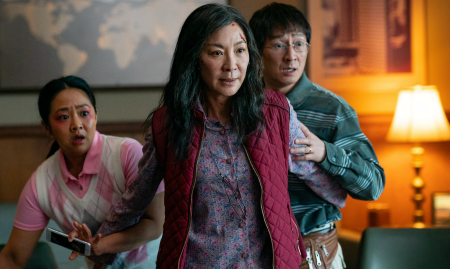
1. EVERYTHING EVERYWHERE ALL AT ONCE
This year or in any other year, there was simply no other cinematic experience like it. It truly defies explanation.
I don't even know that I could express why it worked so well, but I know for sure that it worked masterfully.
Evelyn (Michelle Yeoh) is trying to complete her tax audit, throw a Chinese New Year party to impress her father
(James Hong), while also navigating a possible divorce and avoid alienating her daughter Joy (Stephanie Hsu).
She's also the last hope of the multiverse - tasked with fighting an evil entity threatening to destroy, well, everything.
And once it starts, you better hold on, because it rarely stops and surprises you at every single turn. It's an all-out cinematic
assault from that point on, a whirlwind of astounding creativity and originality that dazzles, delights, and defies explanation
with every passing second. Leaving you breathless is its entire purpose. But what makes the film truly astounding is how much emotion
and deep character development that manage to stay at the forefront with so many outlandish scenes.
"Everything Everywhere All at Once" is the second feature from the directing duo of Dan Kwan and Daniel Scheinert, a.k.a. Daniels,
who started in music videos and inventive shorts before graduating to the 2016 film "Swiss Army Man." They balance the 'did they
actually just do that?' moments with such spectacular emotion, enriching the soul while confounding the senses.
This is a Daniels film - the intersection of the profane and the profound is their comfort zone.
So much of that emotional depth comes from the fact that, beneath the multiversal mayhem, "Everything Everywhere All At Once"
is a spectacular story about family. It's a story of disappointment and miscommunication and the burden of expectations across generations,
centering on the immigrant parent instead of looking on from the point of view of their kid. The film extends an empathy toward Evelyn
that's deeply moving and long in coming, giving consideration to her in all her shortcomings - her impatience, her callousness with
those close to her, her inability to finish anything, her doubts - and then finding in her generosity and grace as well.
The magic of this film is in its title - within it, you'll find every genre and experience every emotion. It's both a reflection of,
and an oasis from, the incessant overstimulation of our contemporary life. So many films would collapse in on themselves under that kind
of pressure, but this one never does. It is assured, risky, and thunderously cinematic, revelling in the simplicity of filmmaking's most
basic tools, while deploying them to their maximum potential. And it is brilliantly performed - Stephanie Hsu is revelatory as the multifaceted
Joy; Ke Huy Quan is astonishing in his cinematic comeback, an action master who'll make your heart explode too; Jamie Lee Curtis has a blast
exaggerating the monstrous physicality of a no-bullshit tax officer; and Michelle Yeoh is absolute perfection, drawing on every skill
from every role she's ever played to bring Evelyn's many lives to life.
This is a radical film, about radical love and radical acceptance.
It's the biggest-hearted movie you can imagine that also features someone being beaten to death with two massive, floppy dildos.
You'll laugh at the literally ballsiest fight scene ever committed to film. You'll cry at a shot of two rocks who communicate through subtitles.
You'll never look at a bagel the same way.
See, even trying to describe it probably makes the movie sound insane and one you wouldn't want to watch, but trust me,
this is a film to be experienced much more than being written about. A pure firework display of technical bravado, wild invention,
emotional storytelling, comedic genius, action mastery and outstanding performances. Quite simply, "Everything Everywhere All At Once"
is everything cinema was invented for.

2. RETROGRADE
The greatest documentaries ever made are the ones that truly get up close and personal with their subjects, but very few filmmakers
risk their lives to be as up close and personal as director Matthew Heineman did in this deeply moving look at America's chaotic
withdrawal from Afghanistan in 2021. We all witnessed this chaos through the nightly news, but that couldn't even come close to
truly capturing the heartbreak of a situation from those on the ground who had to facilitate the withdrawal, and particularly in
the crushing souls of the Afghanistan army who were left to try to fight the Taliban on their own.
It's the faces that stand out in this deeply personal look at war, a stylistic and thematic motif that offers an empathetic
power to the film as well as an aching poignancy. It opens with the chaos at the Kabul Airport in August 2021, a heightened and
desperate scene as soldiers attempt to keep order by firing rounds into the air. The cameras themselves seem to flinch,
along with the terrified Afghan citizens attempting to leave their country, but the camera always find the faces, capturing true
fear and desperation.
Embedded with a group of 12 American Green Berets in January 2021, "Retrograde" captures the anxiety about U.S. withdrawal
and the grief at the announcement. Though the Berets say things like, "It's not my call," and that the decision is above their pay grade,
their faces express what they cannot: anger, frustration, and sorrow. They make sacrifices to be far from home, but they're also
deeply connected to their colleagues in Afghanistan, offering training as well as logistical, medical, material, and technological
support to fight the Taliban. The only person with seemingly a shred of perhaps misguided optimism is General Sami Sadat, a
rising star in the Afghan Army, a remarkably charismatic, though serious and somewhat soft-spoken man, his large, sad eyes glued to his phone.
As the Green Berets make their sad goodbyes, "Retrograde" becomes a portrait of Sadat as he attempts to maintain control as the Taliban
moves into the vacuum left by the U.S. Sadat's hope is merely a willingness to fight for his country, and he seems the only one
possessed of that in the terrifying months after the U.S. forces have left. It's what drives him forward every day, visibly overwhelmed,
abandoned by everyone, but unwilling to give up. He is seemingly the reason the Afghan troops were able to hang on for as long as they did.
Heineman and his team were granted truly remarkable access to Sadat, the cameras in meetings with his inner circle, on the front lines,
in helicopters during intense firefights. We see him smoking cigars on the balcony of the governor's compound in Lashkar Gah,
rockets streaking overhead. Sadat seems to be the only one willing to stand up to the Taliban, and when Lashkar Gah falls, so too
does the rest of the country, the President fleeing.
It's a film that is incredibly honest; urgent but not frantic, heavy and somber and vitally important in capturing the human
reality of trying to navigate an impossibly tragic situation created by two decades of bad decision-making. There's fault to be
found in so many places, but at the end of the day, the people we see in this film are the ones who were truly affected and will
be affected for years and decades to come. I'll never forget the haunting final shot of this film, a closeup of a young Afghan woman
behind a chainlink fence at the airport. One has the feeling that this might be the first woman's face we've seen not concealed behind a
burqa. Her eyes are expressive, searching ... someone who absolutely has no idea of what the future will hold for her. The shot is again
a redirection to look away from the larger strategic and political moves and, instead, toward the human beings in all of this, which is
all that truly matters and what unfortunately always gets overlooked when unnecessary wars are fought. There's no easy answers, there is
simply chaos, unnecessary suffering, and loss. It's a profound lesson about war that so many men just continue to sadly ignore.
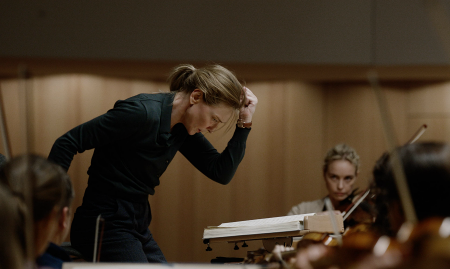
3. TAR
He's only directed three films so far, but every single time Todd Field has helmed a film, it's not only been a movie that I've felt
was one of the very best of the year, but it also becomes a film that haunts me in ways that resonate long after. The same was true
of his latest film, "Tar", another film that contained one of the greatest performances of the year. At a time when most movies spoon-feed
background and narrative developments to viewers via exposition and flashbacks, Field goes for a more ambiguous approach. By trusting the
audience to settle into the life of famous conductor Lydia Tar (Cate Blanchett) and bond with her organically, he allows details to
emerge naturally and sometimes not at all. We piece together Lydia's past in such a way that nuance and shading keep us unsure of many
specifics, even after the end credits have rolled. (And in a unique twist, the end credits roll at the beginning of the film, allowing the
viewer to see what they usually choose to ignore when they sprint for the doors after a movie ends).
"Tar" relies on two qualities that were once important to serious movie-goers but have since all-but-disappeared: patience and concentration.
The movie rewards those who allow themselves to be immersed and aren't guided by expectations that some great melodrama is going to unfold.
"Tar" is essentially about our current moment, and all the whirlpools of discourse around #MeToo and "cancel culture", but rarely in a way
that feels like a polemic. It answers the question of "should we separate the art from the artist?" by laying bare how impossible a demand that is.
It begins with an example of the music of Bach and whether we should still appreciate that music today given aspects of his personal life,
and then proceeds to present a story that presents us with that exact same dilemma. Lydia is a star of the world's orchestral community.
The celebrated composer-conductor, whose "home base" is the Berlin Philharmonic, is hyper-focused and intellectual. But, as she prepares to
lead the orchestra in a live recording of Mahler's 5th Symphony, her personal life begins to unravel. Most of the problems are of her making.
A former protege (and possibly lover) has become "unstable" and obsessed, sending Lydia odd gifts when the conductor attempts to cut her out
of her life. Lydia does little to hide her attraction to the new cellist, Olga, an act of disrespect to her wife. And she bypasses her loyal
assistant, Francesca, when there's an opening for an assistant conductor's position. Combined, these things form the basis for a trial-by-social
media backlash that catches Lydia by surprise. The accusations fly and, while some seem unlikely, we (as an audience) begin to suspect the
validity of the old cliche: where there's smoke, there's fire.
Not surprisingly, Cate Blanchett delivers an absolute masterclass of a performance - an acting clinic about how to fully inhabit an individual
and bring her to life without resorting to histrionics. In addition to fleshing out Lydia and showing the cracks in the cool, porcelain public
facade, Blanchett does her own conducting and piano playing, allowing Field and cinematographer Florian Hoffmeister a degree of freedom when
filming her (in other words, "stunt hands" aren't needed). This is important because of Field's love of long, unbroken takes. The movie often
goes minutes without a cut. It's refreshing to sit through a movie that exudes such quiet confidence in its story and lead actress
that there's no need to rush or amp things up to retain a viewer's attention.
"Tar" unfolds on its own terms and is willing to accept that Lydia's story may not enthrall those who view movies as simply popcorn
entertainment. It reminds us of a time when filmmakers treated their audience with intelligence. "Tar" isn't based on a true story but it
possesses an emotional and intellectual honesty that makes it seem more real than countless
made-for-mass-consumption biopics. I think Martin Scorsese said it best when recently honoring the film with one of the Best Picture
awards of the season. "For so long now, so many of us see films that pretty much let us know where they're going," Scorsese said. "I mean,
they take us by the hand and, even if it's disturbing at times, sort of comfort us along the way that it will be all okay by the end.
Now this is insidious, as one can get lulled into this and ultimately get used to it, leading those of us who've experienced cinema in the past
- as much more than that - to become despairing of the future of the art form, especially for younger generations. But that's on dark days."
Scorsese continued, "The clouds lifted when I experienced Todd's film, Tar. What you've done, Todd -- is that the very fabric of the movie
you created doesn't allow this. All the aspects of cinema and the film that you've used, attest to this. The shift in locations for example,
the shift in locations alone do what cinema does best, which is to reduce space and time to what they are, which is nothing."
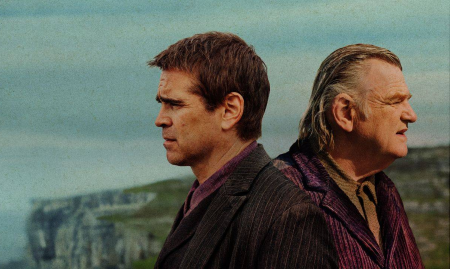
4. THE BANSHEES OF INISHERIN
Martin McDonagh, truly one of our greatest and most unique writer-directors, delivered another one of the movies of 2022 that I can
say was a complete and utter surprise, both in how accomplished and entertaining the film was, but also how I had no idea what to expect
every single moment as the story unfolded.
Reuniting the two stars of McDonagh's 2008 debut feature "In Bruges", it's an end-of-friendship breakup movie that swings between
the hilarious, the horrifying, and the heartbreaking in magnificent fashion. It's laugh-out-loud hilarious - sometimes uncomfortably so,
and you catch yourself wondering why you're laughing at such things. And it's also very grim sometimes, there's a heaviness that is
genuinely affecting. It is very, very Irish. McDonagh expertly balances the two, threading that humour and pathos like a master painter
who knows exactly when to change colors. Set in 1923, against the backdrop of the Irish Civil War, the island of Inisherin has largely
escaped the conflict on the mainland. The dimwitted yet sweet Padraic (Colin Farrell) arrives at his friend Colm's (Brendan Gleeson)
home as he does every day just before 2pm, for their daily visit to the local pub. Padraic is confused when Colm tells him that he
doesn't want to be friends with him anymore. There's no particular fight or instigating event, Colm merely wishes to spend his time
composing folk music or pursuing something for which he'll be remembered, rather than listen to Padraic's "dull" chatterings.
When Padraic continues to pursue Colm's friendship, Colm threatens to cut off one of his own fingers for each time Padraic speaks to him.
It's an absurd reaction, disproportionate to the extreme. McDonagh uses it here not to blabber on about the complexities of male
friendship as it is about how arbitrarily cruel humans can be.
Not aspiring to be anything further than this basic story, it is truly remarkable how much the film engages on a level that is
hard to even describe. The casting is impeccable, with perhaps Colin Farrell's best performance yet, and the chemistry of his real life
friendship with Brendan Gleeson only makes the comedy and the tragedy of this story all that much more real and engaging.
But they're surrounded by so many wonderful supporting characters, especially Kerry Condon and Barry Keoghan.
With McDonagh's evocative world-building and the delightful lyricism of his dialogue, there's a rhythm that can be both lulling
and jarring at the same time. It's in that tension where McDonagh and this truly remarkable film thrive.
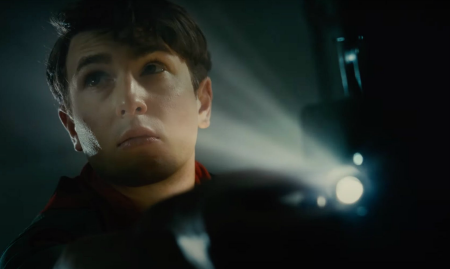
5. THE FABELMANS
I consider it a privilege to have grown up on the movies of Steven Spielberg. He's been making movies exactly as many years as I've been on this Earth, from the very beginnings of that suspenseful film "Duel" made the year I was born. Throughout various stages of my life, his movies have inspired, entertained, and moved me along with so many others around the world. So it was almost impossible that I would not be so deeply moved by Steven Spielberg's most personal film yet, the movie where he finally tackled his childhood.
Standing outside a theater in 1952, Mitzi and Burt Fabelman (Paul Dano and Michelle Williams) try to calm their 7-year-old son Sammy's apprehensions about seeing a movie for the first time. Burt crouches down and proceeds to explain the technical apparatus spinning 24-frames-per-second and the concept of "persistence of vision" to his son. Sammy's mother takes a different approach: "Movies are dreams," Mitzi says. "But dreams are scary," her son replies. "Not all dreams," she reminds him. The film is a self-mythologizing wonder and among the director's best and most personal films. This moment in the opening encapsulates who Sammy, a stand-in for Spielberg, will become-an equal share of Mitzi and Burt, and a walking personification of film itself.
"The Fabelmans" is a coming-of-age tale about Spielberg's early life and introduction to filmmaking. But it's also a portrait of his influential parents, which acknowledges that without them, flaws and all, Spielberg wouldn't have become one of the greatest and most successful directors of the last century. For over two decades, Spielberg has shown interest in exploring his childhood on the screen, but he was hesitant to follow through, fearing how his parents would react to seeing their personal lives turned into art for the masses. His real-life parents, Leah and Arnold, have passed in the last few years, giving the director the push he needed to finally share his story. But "The Fabelmans" doesn't show a scathing or unloving critique of his upbringing. Instead, it's at once a tender portrait of his family and an effort to understand the complexity of his parents, including their unstable and sometimes downright volatile relationship.
"The Fabelmans" is also funny, moving, superbly acted, and extraordinarily well-executed. For those who don't know much about Spielberg's off-screen life or persistent themes involving broken families in his body of work, the film may not be quite a revelation. But for a certain segment attuned to one of this era's greatest filmmakers, "The Fabelmans" may be Spielberg's most heartfelt and personal film to date.
It was so moving when Spielberg won the Golden Globe for this film, and said in his acceptance speech, "Everything I've done up to this point has made me ready to finally be honest about the fact that it's not easy to be a kid. Everybody sees me as a success story ... But nobody really knows who we are until we're courageous enough to tell everyone." That final sentence hit me so powerfully at a time in my life when I am finally ready to tell everyone about who I am when I was too scared for so long to ever tell my story. I hope this film can be inspiration to so many to do the same.
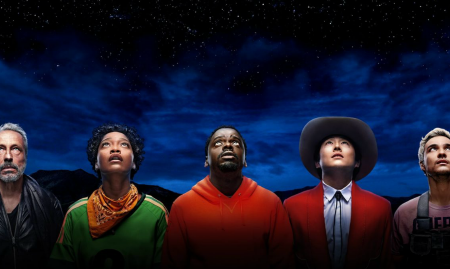
6. NOPE
When proof of extraterrestrial life emerges to this film's underdog heroes, their first instinct is to find a way to make money off it. That's the most honest reaction I've ever seen in a horror film. It's also exactly what I'd expect from Jordan Peele, a filmmaker who sees the social condition with such simple clarity that his films always feel like remarkable works of art.
In a year where I could say I truly experienced films that I had never seen before, this was definitely one of them. Peele's underlying message with "Nope" is clear: there's no remaining part of the galaxy that can't be exploited for entertainment. TikTok, YouTube, and the local news cycle dangle the promise of overnight fame in front of people's eyes, subliminally training us all to view every experience - no matter how traumatic - as potential content.
It doesn't quite feel accurate to say that "Nope"'s sci-fi premise is indebted to other films. Or to Hitchcock's thrills. Or to classic B-movie mayhem. Rather, Peele's innate understanding of cinematic history provides the foundations. "Nope" is his own creation. His own universe. It's truly unlike anything else we've ever seen.
There's always been an unshowy confidence in how Peele's films move, from the smoothness of his camerawork, to the symbolic potency of ordinary objects. "Get Out" has its porcelain teacup. "Us" has scissors. "Nope" has a tennis shoe inexplicably balanced on its heel, and wacky waving inflatable men with horrific grins plastered on their faces. Can never look at those again the same way. There are other images which are so elegantly composed that they deserve to be added to the very best of cinema history imagery.
"Nope" is a film that, on top of everything, celebrates the skill of great craftspeople - not only on screen, with the Haywoods, but with the breathless beauty of cinematographer Hoyte van Hoytema's work, and a soundscape that draws equal power from silence as it does chaos. You could, certainly, make the argument that "Nope" is the most straightforward of Peele's films so far. He's traded the claustrophobic, labyrinthine quality of "Get Out" and "Us" for open skies and pure spectacle. But the genius of his work is that, in the end, none of that really makes any difference. He still gets the same results. Peele, really, is the magician disguised as a filmmaker. "Nope" is the sleight of hand so slick you'll never question how the trick was pulled off.

7. TOP GUN: MAVERICK
At one of the recent awards shows, Steven Spielberg embraced Tom Cruise and told him "You saved Hollywood's ass, and you might have saved theatrical distribution. Seriously, Maverick might have saved the entire theatrical experience."
Tom Cruise kept insisting that this film continue to be delayed and delayed until we could get past the COVID pandemic and audiences could see this film as it was meant to be experienced, in a theater. In so many ways, this film represented the crisis that the film industry has been experiencing in the past few years about whether the future for movies is on the big screen or streaming into the home. While it didn't definitively decide that battle, it certainly made an astonishing case that audiences would still come out in a communal setting with other human beings to experience something magical and exciting on a big screen.
Any movie that could accomplish that and demonstrate just that fact alone would be worthy of praise, but thankfully, this long awaited sequel to one of the most iconic movies of the 1980s was also a tremendously well made film. It managed to not only evoke incredible nostalgia for a time long ago, but a nostalgia for the kind of original non-comic book blockbuster entertainment that is sadly not made very much anymore.
Say what you will about Tom Cruise as a person, there's no denying that he's one of the last great true movie stars, and his gamble on this film was proven wise, as he provided one of the most enjoyable cinematic experiences of the year. The original "Top Gun" was a surprise box-office smash in 1986 despite mostly tepid reviews, a jam packed action film with a soundtrack album that would fast become one of the bestselling movie soundtracks of all time. Still, 36 years later, the economics of filmmaking, film distribution, and film viewership have transformed so completely that releasing a movie like "Top Gun: Maverick" does constitute something of a subversive move on the studio's part.
In 2022, gambling a budget this big on an old-fashioned, star-driven action movie with a middle-aged leading man at its center without a superhero in sight is quite literally risky business. Sad that that is the case, but it's the truth. And maybe that's one of the most key reasons that this film succeeded as hugely as it did, because deep down we all realize that contemporary cinema is truly missing something, and for a couple of hours, it was so wonderful to have it back.
"Top Gun: Maverick" does everything you want in a sequel: it captures the spirit of the original, offers meaningful character arcs, and progresses the story logically. It's also incredibly entertaining, and doesn't forget its purpose. Credit director Joseph Kosinski for keeping the film's plot and characters focused, and Tom Cruise himself for providing the perfect artistic vision as executive producer. He made it known how much he wanted give the audience a meaningful sequel, not just an excuse to make money. Even though the film follows many of the same paces as the first, the movie never feels like a retread. It never disappoints, and it's constantly entertaining. The final mission, though it gets a bit improbable, is way too much fun to nitpick. It's impossible not to feel the thrills Maverick and his classroom of cocky millennial pilots experience, thanks to the camera's frequent placement inside the cockpits. While there's still some visual effects at play, the film's realistic textures come through in its marriage of cutting-edge filmmaking tech with the legitimacy of flights performed in-camera. IMAX cameras have evolved to such a point they can now be rigged inside the cockpits of F/A-18 Super Hornets, which are flown for real in Maverick. It is escapist entertainment at its best, and in an era of overly-busy, high concept Hollywood releases, this film shows flying to the heavens isn't all it's cracked up to be. Instead, at the right speed, keeping close to Earth can still take your breath away.
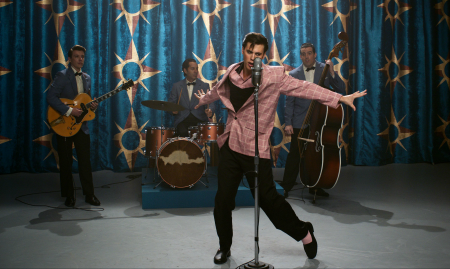
8. ELVIS
You could see it from the very first trailer that was released. Austin Butler absolutely killed it portraying Elvis Presley. Once the film arrived, it was even further solidified that this was a truly remarkable performance that rose far above imitation into something truly unique about one of the most familiar legends of all time.
You certainly know you're watching a Baz Luhrmann film when, just a couple of seconds in, you're proudly presented with the Warner Brothers shield bejewelled with rhinestones. The whirlwind film that follows, full of hyperactive cinematography and editing, flights into vivid fantasy, and enough audio-visual showmanship to make the King of Rock and Roll himself proud, cements the film as perhaps the Australian auteur's masterpiece.
Elvis's life story is so well known by this point, and I was wondering what could possibly be new in another film about the singer. This film takes a slightly different angle, looking at the influence of Elvis's manager, Col. Tom Parker, on his life and career. But it's also Luhrmann's style that makes this film so much different than other Elvis portrayals, and in so doing, matches the style of Elvis Presley himself than almost any other cinematic interpretation has been able to do.
Everything in "Elvis" is turned up to eleven, pretty much all of the time. Elvis super-fans might take issue with the way certain key events in The King's life are represented. Luhrmann clearly has next-to-no interest in Elvis' flash-in-the-pan film career and if you're not already a fan of his more-is-more directorial style, this certainly won't change that. What "Elvis" really succeeds at is capturing the revolutionary spirit of arguably the biggest American music icon, and showcases his unmatched and far-ranging back catalogue in performance scenes that live up to the promise of the Greatest Show on Earth.
But above everything else, this film succeeds because of the master class in acting that Austin Butler shows in his performance. From the very minute Butler swings his pelvis and sings "That's All Right," he embodies Elvis' charm and mannerisms, right until the end. There isn't a more committed performance by an actor to portray one of music's greatest living legends since Taron Egerton's performance as Elton John in "Rocketman". Butler's performance has to be seen to be believed, but for the skeptics who thought he was too young or had little charisma to play the King of Rock, he proved everyone wrong as soon as he appears on that Hayride stage and moves his hips. It's hard to steal the spotlight away from Tom Hanks, David Wenham, Luke Bracy, and Richard Roxburgh, but Butler dominates every scene he's in. Combined with Luhrmann's energetic and stunning filmmaking, it was truly one of the most enjoyable films that I experienced in 2022.
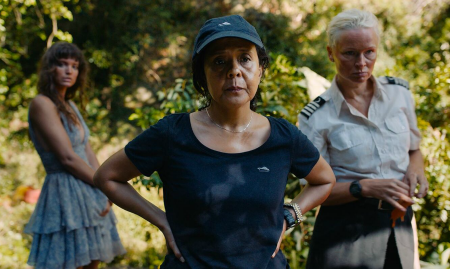
9. TRIANGLE OF SADNESS
In the category of other movies this year that I could truly say were unlike any other cinematic experience before, I would definitely place this latest film from director Ruben Ostlund. It opens with a perfectly executed first act, a short film in itself, detailing the relationship dynamics between two models, a restaurant bill serving as a lightning rod to explode out their lopsided relationship. It's built on the mutual benefit of exposure to eyeballs on each other's social channels rather than the true friendship overly sensitive Carl wants, the equality he says he desires, as if quoting from a woman's magazine. It's the money question that divides, exposes, with a dialogue brimming with simmering heat and barely covered barbs: "I make more money than you anyway," Yaya drily draws the line in the sand, and ends the cash question.
The second part, set on a super-yacht cruise, moves from cash to capital - here they are, the super-rich, and this is likely one of the wildest hours of film I saw all year. The oligarchs, heirs, and uber-wealthy that have completely lost touch with common society are an easy target for satire; it's not difficult to show them as crude, greedy, emotionally aloof; and contrast them with a front-of-house crew of equally greedy white staffers, trained to never say no; and below them, in the windowless parts of the ship, the ethnic minority and pan-Asian cleaning, housekeeping and engineering crews, barely seen, not to be interacted with.
It is later, during the climax of the second act when a storm hits the ship and it doesn't stay level in the water anymore, that the comedic potential of these characters rises beyond what could reasonably be expected. The insistent crashing of waves against the ship with sounds of doom, the dangerously tilted floors and surfaces, and the reactions of the guests to the cuisine food are so over the top but still work. It's comedy that levels the guests to their pure physical functions, the worst that could possibly happen to this group of people.
The third act turns the social dynamics around again: from cash, to social and financial capital in the first two acts, to now being in actual survival mode. Now, the capital that determines who is in power is the skill to actually ensure survival - and of course it's the Asian lady from the bottom of the super-yacht who is the only one with the necessary hunting skills, as a small section of the yacht's guests gets stranded on an island. Dolly De Leon as Abigail is outstanding in how she steps into power and leads the group, while keeping herself satisfied with boytoy Carl.
"Triangle of Sadness" is a very intelligent satire about how stupid we all are if we are deprived of millions in fortune, deprived of followers or deprived of any status endowing aspect we might have, and, well, given the circumstances of complete loss we might as well have a good time despite everything. Superb, different, entertaining, and substantial.
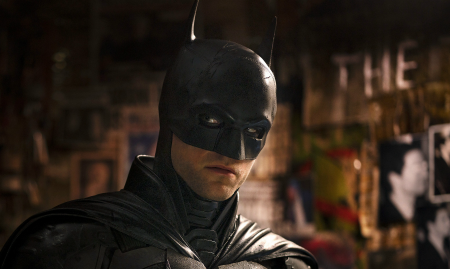
10. THE BATMAN
I was such a huge fan of Christopher Nolan's Dark Knight trilogy, and I truly thought there could never be another Batman interpretation worthy of what he achieved. I also didn't think it was possible to provide yet another interpretation of this iconic character that would be something different or interesting. But I was sure proven wrong by Matt Reeves's vision and a truly haunting and striking performance by Robert Pattinson as Bruce Wayne/Batman.
From its horror movie opening to the teasing final credits, it's an intense, apocalyptic cinematic experience. This film brilliantly picks up Batman's story when he is two years into his crusade against Gotham City street crime. He's formed an alliance with upstanding cop Jim Gordon, but nothing prepares them for a chillingly planned series of atrocities by a macabre masked murderer who leaves fiendish puzzles with each victim. As Batman unpicks the cryptic clues, the investigation peels away a greater conspiracy. But the real riddle is how the ranting killer's twisted motive ties back to Batman himself. It's more of a detective mystery than previous incarnations. It's also a gangster movie. Also a '70s conspiracy thriller. And a relentlessly bleak film noir. Most of all, though, this Batman is a horror movie.
Robert Pattinson genuinely inhabits the Batman, expressing despair with just his perfectly angled jaw and soulful eyes staring from beneath the black mask. For all his formidable fighting skills and detective prowess, this Batman is barely holding it together. And that gives the film a vital charge. So if you were wondering whether there's any room for a fresh take after 14 movies, it's actually surprisingly invigorating to see a Caped Crusader who's more human -- not just Bruce Wayne, but as the Batman himself. This Batman doesn't magically disappear from a room, but has to run for his life sometimes.
One of the highlights of the film is when Batman does something we've seen the character do a million times, but it's clear from Pattinson's little wince this is the first time he's done it. Suddenly a superhero cliche becomes a genuinely perilous and thrilling moment. Pattinson's narration, delivered like Rorschach's journal, grumbles mainly about vengeance, fear, justice, the usual stuff - the mood is justified by a believably dark bad guy. In a crowded rogues' gallery (shout-outs to Zoe Kravitz's instantly charismatic Catwoman and Colin Farrell's bafflingly convincing prosthetic Penguin), this is the Riddler's show, anchored by a chilling Paul Dano performance. He's a bespectacled terrorist of the Trump era, driven by an incel's misplaced sense of injustice and a love of fiendish puzzles. What will also hold your attention is how beautiful that underbelly looks. Working with his cinematographer Greig Fraser, Reeves has rendered perhaps the best screen realization of Gotham so far; walking a careful tightrope between gritty realism and heightened pulp (lots of neon, lots of rainfall) without ever overplaying their hands. The result is some remarkable film craft, of a level rarely seen in modern blockbusters. Michael Giacchino's brilliant, minimalist score completes the effect, building on the hugely effective work of Hans Zimmer - evolution, then, rather than revolution.
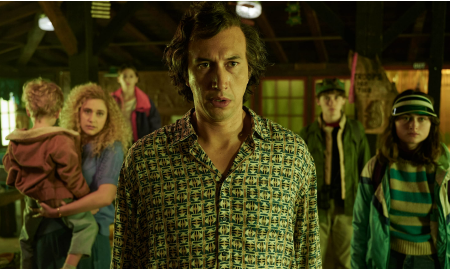
11. WHITE NOISE
It's honestly difficult to describe this movie, or why it worked for me, but I just know it did. Based on the novel by Don DeLillo, "White Noise" is a very specific slice of America, heightened and amplified to absurd proportions with Adam Driver's enjoyable overacting and a joyously over-written script by writer and director, Noah Baumbach, who has always produced such intriguing unique work.
The Gladneys are at once an ordinary American family and also so far removed from the ordinary that it's frankly absurd. Both Jack and his latest wife Babette (Greta Gerwig) are obsessed with death to the point that it preoccupies their lives and their relationship with one another. Their arguments over who will be more heartbroken if the other dies first punctuate the weirdness of their lives, but also offer an interesting commentary on postmodern America.
For a film that's preoccupied with big, existential issues, "White Noise" feels far lighter than it should. That's not to say there aren't some truly dramatic moments, especially in its second act, which sees the Gladneys' hometown under the ominous shadow of a toxic airborne event. There's both terror and humor at the heart of this film, and that's the whole point: holding a mirror up to contemporary America to see the absurdity of its own duality.
By taking the original story and ramping up the ridiculousness in a myriad of ways, Baumbach shows a subtle understanding of his subjects in the exact way that they themselves do not. An impeccable score by Danny Elfman only serves to heighten everything we see on screen, from the weirdness to the tension, with B-movie-style moments that seem predictably ominous. The visuals all at once evoke a particular time and place while sitting laughably outside of it, amplifying the film's '80s stylings to become a parody of itself.
"White Noise" holds up a mirror to contemporary America, forcing a self-examination that both amuses and terrifies. It may be set in the '80s but it's as timely as ever, forcing us to examine the failings of postmodern culture and face the comedy and terror inherent in our society. It may be funny, even light-hearted in places, but the film confronts heavy, poignant topics with a level of awareness that will make you laugh while your skin crawls. A flamboyant performance by Adam Driver drills down into our own inadequacies, while Greta Gerwig's Babette keeps the whole sorry mess together with a graceful banality that's beautiful in its ordinariness. "White Noise" is an overtly weird yet almost mundane take on some heavy existential issues, all wrapped up with a bizarre yet absolutely charming final musical number in a grocery store. I told you it was difficult to describe this movie, it just needs to be experienced.
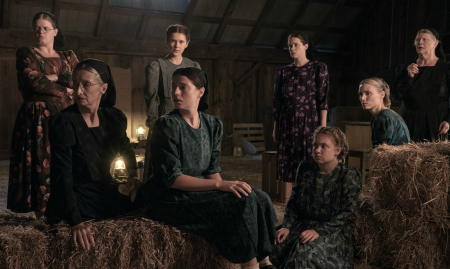
12. WOMEN TALKING
This film is such a beautifully controlled and intentional piece of filmmaking by director Sarah Polley. Her production yearns for safe spaces for women to think freely, express themselves without fear of repercussions, and make their own decisions. Staged like a chamber piece yet presented in the format of a debate forum, the film delivers a series of declarations about the female experience that span generations.
"This story begins before you were born," says the opening narration, which seems to place the proceedings in the distant past, albeit told from a more promising future. Similarly, Polley's film is urgent and of the moment, yet it's also timeless in its portrait of female agency clashing with patriarchal oppression-in this case, of the most unthinkable kind.
Formally and narratively, Polley has deemphasized the cultural details of the conservative Christian community on display and, in doing so, amplified the representational quality of their conflict. Early on, the audience becomes aware that the women of an isolated Mennonite colony have been repeatedly drugged and raped by the men for years. It's an unbearable crime, but the details of how and what has been perpetrated is far worse, and it's through dialogue rather than action that we understand just what has transpired in this community.
Much like a play, the story unfolds as a discussion about what should be done about these violations. A group of women, representing all of the women, gather in the attic of the barn alongside the school teacher, August (Ben Whishaw), who has agreed to take the minutes since the women can't write. They present three choices: do nothing, stay and fight, or leave. Doing nothing is not an option for most of them. Boundaries have been irrevocably broken and the situation urges action. But the other two options feel imperfect. One means coming face to face with the perpetrators and potentially being punished. The other means leaving loved ones behind.
It's that struggle between the two that drives the conversations-and arguments-in "Women Talking". It would easy to call the film a #MeToo movie, but it's a lot more than that. These aren't trendy conversations; they're long-held struggles that people of all genders have faced for generations. Instead, Polley asks why people are forced to endure such horrific repression and violence because they are female. The question resonates far beyond the end of the film, although there is no quick answer.
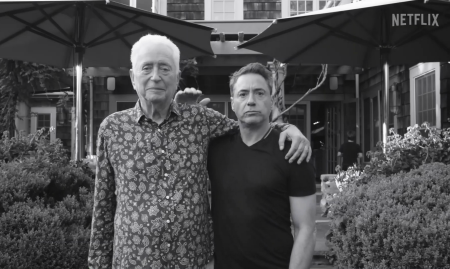
13. SR.
One of the most emotionally moving and unique documentaries of the year was this one, a film which managed to capture the revolutionary spirit of the filmmaker/man at its heart, Robert Downey Sr. by having it reflected in the style of the documentary itself.
Filmed over the last three years of his father's life, "Sr." is titled the way it is because Robert Downey Jr. shares the same name as his father. Through the course of the documentary, Jr. presents a personal race against time as he attempts to capture as much as possible of his father, who at the time was suffering from Parkinson's disease. Downey Sr. was an underground filmmaker whose movies were absurdist and defiantly non-mainstream. In an approach fitting of his idiosyncratic works, Sr is a playful documentary that's really two movies in one: the 'traditional' documentary, directed by Chris Smith, and Downey Sr's own unique take on the genre.
The film begins as an attempt for the actor to get to know his father and gradually evolves into an exploration of his films and work as an artist, before it switches gears once again and transforms into an intimate reflection on their father-son relationship as the older Downey enters the final months of his life.
There are several layers to this documentary, each becoming more poignant and revealing than the last in its search for deeper meaning. Throughout, though, the genuine love this family have for each other and the creative process is unmistakable, and I couldn't help but be inspired and moved by all of it. "We're here, we do stuff, and then we're gone," Downey Jr says of what he believes the main theme ends up being. Much like his father's work, "Sr." might not open itself up to deeper exploration, but it is a fitting tribute that proves as creative as its subject.

14. GLASS ONION: A KNIVES OUT MYSTERY
This film is all about disruptors. As a character states in the film, disruptors are those who break from the norm, those who take something people are already growing tired of, and prepare the world for the next better step. There are few greater disruptors working in modern cinema than Rian Johnson.
In "Glass Onion", Johnson once more proves himself to be a disruptor, again upending expectations in this second Benoit Blanc (Daniel Craig) mystery, making an even bigger, more ambitious, and, somehow, even more entertaining whodunit than the previous film. This time, the action moves to Greece, as a new group of characters head to a getaway on a private island owned by tech billionaire Miles Bron (Edward Norton). Amongst the visitors are Claire (Kathryn Hahn), a governor running for Senate; Lionel (Leslie Odom Jr.), an impressive scientist that works for Miles; streaming star Duke (Dave Bautista); fashion designer Birdie (Kate Hudson); and Cassandra (Janelle Monae), another entrepreneur who the rest of the group seems surprised to see. While this group of friends frequently gets together for these types of getaways, there's a new addition to this outing: Detective Benoit Blanc.
To give anything else away about this film would be doing a disservice to one of the most enjoyable mystery films of recent times. "Glass Onion" finds even more ways to disrupt mystery conventions, constantly shifting what the audience is expecting, and continuously moving the pieces on this ever-shifting puzzle. Quite simply, Johnson has put together an impeccably crafted mystery onion, for lack of a better term, peeling away and unraveling the details of his story, while adding whole new layers as the film progresses. The result is a deeply satisfying tale that never heads in the direction one is expecting.
With "Glass Onion", Johnson narrows the suspects to a few, yet the mystery is even more intriguing and captivating than you think. Craig is naturally a standout here, getting to play up the goofiness and absurdity of this mystery, in what is likely his best comedic role so far. Also a tremendous standout is Monae, who has always been a commanding presence, but is truly remarkable here.
If "Knives Out" was Johnson's way of reconfiguring the mystery film, "Glass Onion" is Johnson's way of once again defying the expectations of the genre, withholding details, giving some away earlier than expected, and completely upending what the audience is believing will come next. It's so much fun to watch Johnson in this mode, especially with a cast this relentlessly fun and playful.
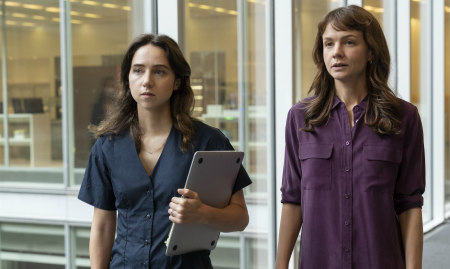
15. SHE SAID
The fight against the patriarchy, and the long-standing structures that created and enabled the pain inflicted by Harvey Weinstein's many assaults, is hardly over. But the work of New York Times reporters Jodi Kantor (Zoe Kazan) and Megan Twohey (Carey Mulligan) was a hell of a punch that's worth remembering, discussing, and building on, and "She Said," based on Kantor and Twohey's book about their investigation, is far from a dull retread of facts, interviews, and transgressions that you may know. It's a crackling intellectual thriller that really understands the essential, difficult work of journalists, and the courage it takes from all sides to bring truth to power.
The film watches as the reporters identify numerous women, from well-known actresses to difficult-to-find former assistants, who have terrible stories to tell about Weinstein but may not want to go on the record for any number of understandable personal and professional reasons. "She Said" is an important "get the work done" movie, tapping into people being very human and also totally badass in pursuing a story, knowing who, what and how to ask, and taking on a mammoth uphill battle.
"She Said" puts faces to real events that led to "Me Too" but hardly a world in which harassment has ceased. Mulligan is particularly great, establishing Twohey's courage and persistence without overdoing it, and Kazan is subtly effective as well. Neither actress is trying to create a hero, just a great journalist who doesn't give up and cares and knows what to do and how to do it and that even then nothing is guaranteed. Samantha Morton, Andre Braugher and Jennifer Ehle are very strong in supporting roles as well.
No frills are needed to tell this once-in-a-generation story. Any concerns for a film about the unglamorous world of journalism are avoided thanks to sharp performances, sensitive direction, and one irrefutable truth: these women won.
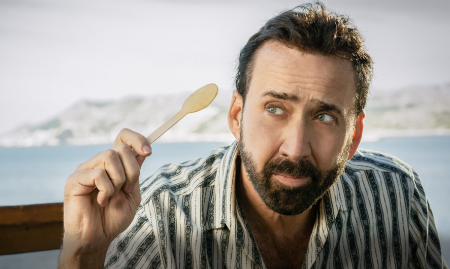
16. THE UNBEARABLE WEIGHT OF MASSIVE TALENT
There are actors. And then there are legends. Nick Cage is sure that he belongs in that latter category. The Nick Cage of this hilarious film is a wonderful send-up of the real Nicholas Cage. This version of "Nick" Cage is in the midst of a career crisis, and can't seem to land a serious role to save his life. On top of that, his ex-wife Sally and teenage daughter Addy (Lily Sheen) are tired of his arrogant attitude ... and he's $600K in debt. When Nick's agent Ted offers him a gig that will land him $1 million to attend super-fan Javi's (Pedro Pascal) birthday party on the Spanish coast of Mallorca, he has no choice but to begrudgingly accept. After arriving in Spain, things take a turn when CIA agents Vivian (Tiffany Haddish) and Ray (Ike Barinholtz) inform Nick that they suspect Javi kidnapped a political leader's daughter, which means the actor is forced to stick around to try to rescue her using all of the stealth and fortitude he learned in his action roles.
The film expertly weaves together numerous kinds of stories. At times, it's a buddy comedy, and Cage and Pascal have such enjoyable chemistry that they effortlessly lift the genre in ways I didn't expect. At others, it's a straight-forward spy-thriller, with stunts from Cage that are bound to remind the audience of past films like "National Treasure" and "The Rock." But the best part of the film is its impressive amount of self-awareness. Most of this comes from Cage himself, who superbly channels caricatures that audiences know and love.
Despite some weak spots here and there, this film worked for me on so many levels. If you're a Cage fan, then you're guaranteed to delight in the bounty of references to his filmography. But even if you're not, this is an emotional, engaging, funny, and yes, riveting film.
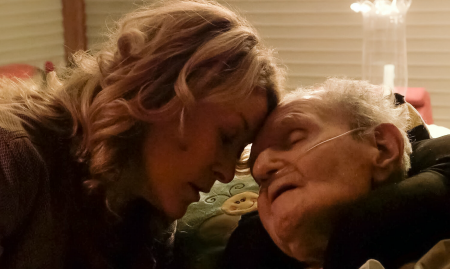
17. LAST FLIGHT HOME
This remarkably moving documentary starts at the end, before going back to the beginning. The first things we hear are a conversation between a father and his daughter: the adult child patiently listening, the father's voice frail yet determined. "We're going to end it today?" he pleads. It's striking how blunt he is. This is Eli Timoner, and when we meet him, he is feeble and bed-bound, his quality of life plummeting after multiple health issues, including congenital heart failure.
From there, director Ondi Timenor goes back to the beginnings when her Dad was healthy and successful, but ultimately coming back to his frail final days and his decision to voluntarily end his life. The film has so much visceral, gut-punch impact, with Timoner turning her own personal footage of her father's last days into a heartbreaking documentary about how we deal with death - whether it's our own mortality or the loss of those we love.
"Last Flight Home" centers largely on the last two weeks of Eli's life, which he plans to end medically - legal in California, though the film shows us exactly how complex that process is, with many stipulations and approvals required to ensure it's what Timoner truly wants. The documentary keeps us locked in with the Timoners as they check in on him, say goodbye and help him fulfill his last wishes.
While there is much to discuss in the debate over medically ending one's life, Ondi Timoner instead lets her extraordinary home-movie-esque footage do most of the talking, ensuring cameras are there to document every step of the process across the final 14 days of Eli's life, a ticking clock even giving us the countdown. It is a deeply intimate portrait of a person at their most vulnerable. It could feel invasive (bordering on voyeuristic) to have this much unfettered access to a dying man's final days.
But Timoner's approach is humanistic and unobtrusive, wanting not to capitalize on her father's death but to share the lovely person she knew with the rest of the world. This is her eulogy to her father, and it's a brilliant one. The moment of Eli's passing, and the silence that follows, is stunning. Thanks to Ondi Timoner's intimate filmmaking, we feel like we're there. What a privilege to be allowed in the room. By its end, you end up gaining a fresh appreciation for the life you have and the people you love.
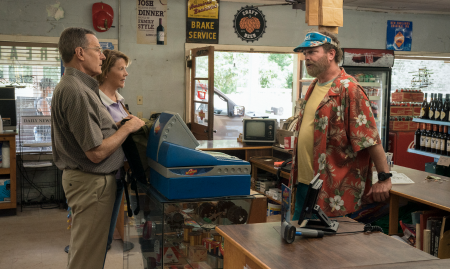
18. JERRY & MARGE GO LARGE
Based on an amazing true story, long-married couple Jerry and Marge Selbee win the lottery (a lot) and then use the money to revive their struggling small town. Bryan Cranston and Annette Bening play small town folks Jerry and Marge and they could have been a couple of characters portrayed with patronization or condescension. That they are not is a testament to the depth and pathos brought by the incredible talents of Bryan Cranston and Annette Bening. Each iconic performer invests full force here in bringing life to the real-life husband and wife pair of Jerry and Marge Selbee. And the result is as joyful as it is moving.
Jerry Selbee is facing retirement after devoting over 40 years to a Corn Flakes company in the small town of Evart, Michigan. He doesn't want to go. He loves his job. But retirement still looms. We quickly learn that Jerry is a math whiz. In his now overabundance of free time, he finds himself crunching the numbers of probability as they figure into the WinFall state lottery, where he soon exposes what he believes to be an inherent flaw in the game. His hunch proves correct, as he soon begins winning big. Soon Jerry, his doting wife, Marge (Bening as a firecracker of a woman with a huge heart), along with family and friends, absolutely clean the Michigan state lottery commission's clock. But those running the show at the astounded agency catch on to the (completely legal) racket and shut WinFall down for good, and right along with it the townspeople's seemingly forever-flowing funnel of fortune. Or do they? It's not long before Jerry uncovers another WinFall lottery in Massachusetts. Alas, an intrepid investigative reporter with The Boston Globe grows wise to the Selbees and publishes a piece exposing their enterprise.
Along the way, courtesy of the writer/director team of Brad Copeland and David Frankel, we get the gift of a sweet story of family reconciliation and the realization of what truly means a damn in life when all is said and won.
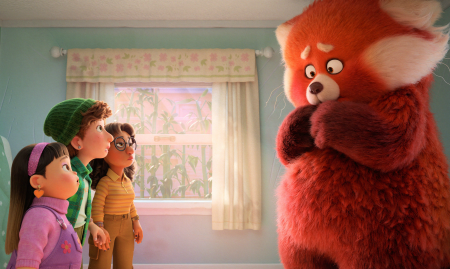
19. TURNING RED
Countless Hollywood movies have told us stories about adolescent boys who test their friendships and learn valuable life lessons under fantastic circumstances. But girl friend groups remain underrepresented in movies, if not entirely ignored.
That's just one of the ways that "Turning Red", one of the very best Pixar films of recent times, breaks from conventions. A dazzling visual treat, the film is rich in Chinese heritage and Toronto landmarks, and the cultural specificity enriches the film's relatable themes. The story about a 13-year-old who transforms into an enormous red panda was a truly inspired metaphor about girlhood and puberty, which not only demystifies the taboo subject but seeks to open communication about emotional hang-ups that emerge in adolescence and can sometimes last the rest of our lives.
Like Pixar's best films, it uses a simple concept as a springboard for complex emotions and visual delights. Pixar often confronts the way children manage their emotions, with the masterpiece "Inside Out" standing above all others; the studio even addressed similar issues of mother-daughter relationships in "Brave". But where "Turning Red" becomes unique is in three areas: First, its ethnic specificity speaks to a nonetheless universal condition of how children, when trying to appease their parents, engage in self-denial, as the standards of others create impossible expectations-and that can have lasting implications. Second, the film's treatment of puberty for girls is something no animation studio has explored, and it's refreshingly matter-of-fact here. Third, and perhaps more novel, the film presents an endearing friendship between girls that feels all too rare.
In coming-of-age films, girl protagonists often appear as loners and outsiders, whereas supportive and lasting female friend groups are a rarity. And then there's the cute factor of red pandas, which cannot help but produce a ridiculous smile from start to finish.
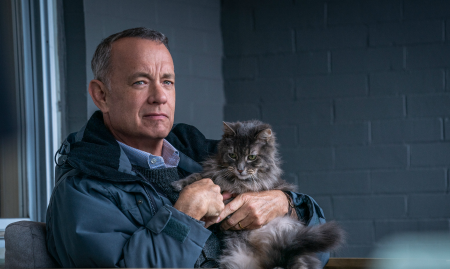
20. A MAN CALLED OTTO
Sure, it may be overly sentimental and you can absolutely predict where this film is going, but this film ultimately succeeded for me due to the wonderful supporting cast and a solid performance by Tom Hanks. In other words, this film works despite itself.
A Hollywood remake of Sweden's 2015 hit "A Man Called Ove", which writer-director Hannes Holm based on the 2012 novel by Fredrik Backman, the new version is directed by Marc Forster, and while I never saw the Swedish film or read the book, this film made me intrigued to seek out both.
"A Man Called Otto" is the kind of straightforward, inoffensive dramedy that used to be incredibly common. Nowadays, Hollywood seems less and less interested in producing movies like this. That fact doesn't make the film a particularly unique or boundary-pushing film. It does, however, make it feel like a relic from a different time, as honestly a lot of the films that made my top list seem to be.
The new film follows Hanks' grumpy older man as his attempts to end his life after the death of his wife are repeatedly interrupted by the sudden arrival of his newest neighbors, Marisol (a scene-stealing Mariana Trevino) and Tommy (Manuel Garcia-Rulfo), as well as their two young daughters. It isn't long before both Marisol and Tommy have inserted themselves into Otto's life. In doing so, they open the door for Otto's past to be explored via a series of flashbacks that offer glimpses into Otto's marriage to Sonya (Rachel Keller), who died just a few months prior to Marisol and Tommy's arrival. Sonya's death, combined with his forced retirement, briefly but understandably render Otto uninterested in life. Fortunately, his unexpected friendship with Marisol gives Otto's previously sweet self the chance to reemerge.
The film's story is not, by any means, a particularly original one. Marc Forster's direction and David Magee's open-hearted screenplay don't go out of their way to inject many new surprises or instances of structural invention into the film, either. Instead, the film is perfectly content to rely solely on the dramatic strength of its undeniably simple story and the performances given by its cast members.
The film is not, by any means, as cohesive or emotionally stirring as many of its team members' previous efforts (and certainly not up there with Hanks's best performances), but it's a harmless and charming affair nonetheless. Ultimately, that's just another way of saying that "A Man Called Otto" really is just like the family-friendly, end-of-the-year dramas that Hollywood used to annually put out, the best of which could be relied upon to supply enough laughs and heartwarming moments to justify their holiday-timed releases. And this film, for its part, does just that.